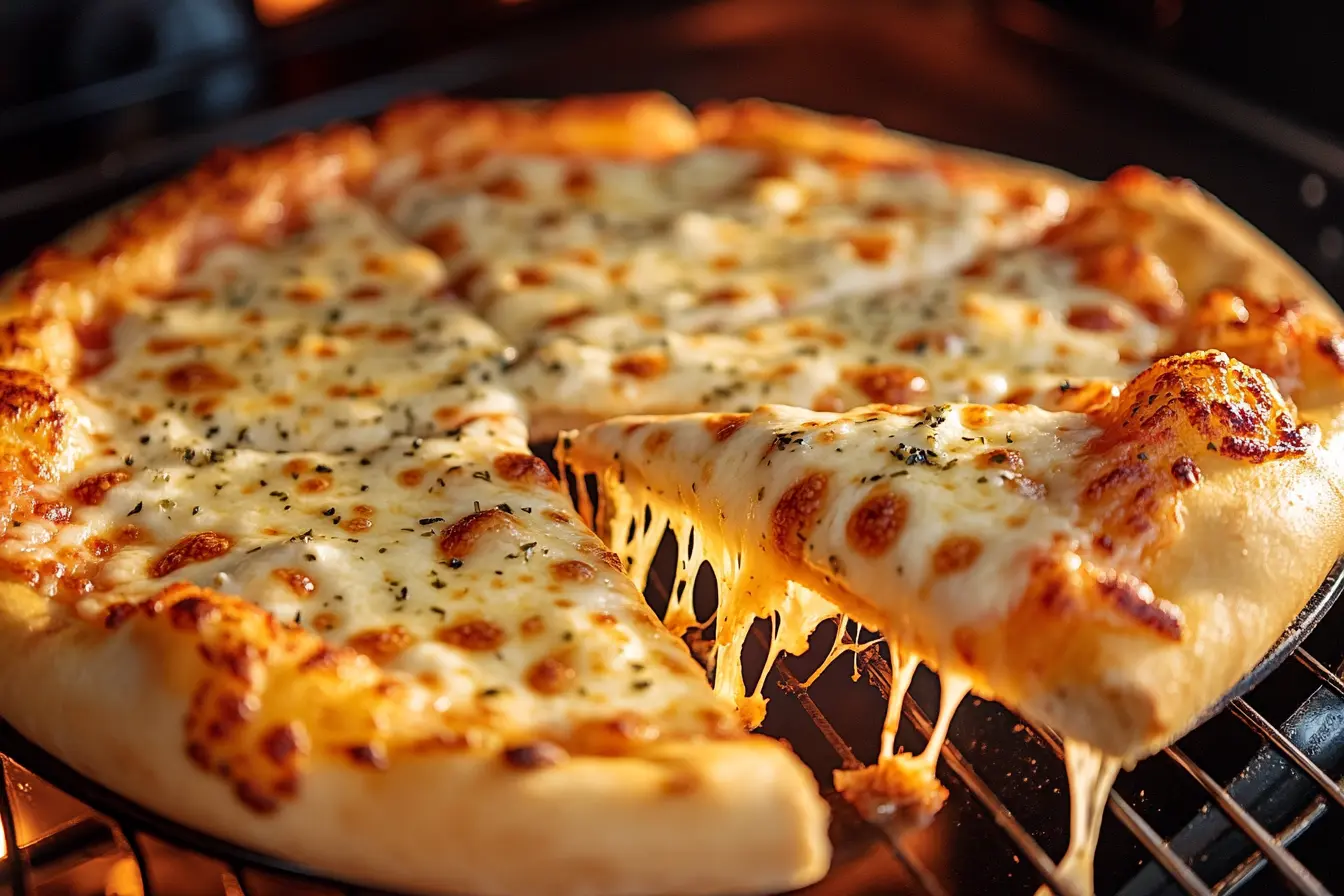There’s nothing quite as disappointing as slicing into a homemade pizza, only to find the cheese sliding off, leaving a bare crust behind. If cheese not sticking to pizza is a problem you frequently encounter, it can certainly turn pizza night into a frustrating experience. Thankfully, the solution is often simpler than you might think. This article explores the science and techniques behind achieving perfect cheese adhesion.
Table of Contents
Understanding the Science of Cheese Adhesion
Achieving that perfect, gooey cheese layer on pizza isn’t just about cooking skill; it’s rooted in the science of how cheese melts and binds. The frustration of cheese not sticking to pizza often stems from misunderstandings of these scientific principles. Factors like moisture content, fat composition, and protein structure all play crucial roles in creating a cohesive layer of cheese that stretches beautifully and stays in place. Understanding these elements empowers you to create pizza with consistent, satisfying results.
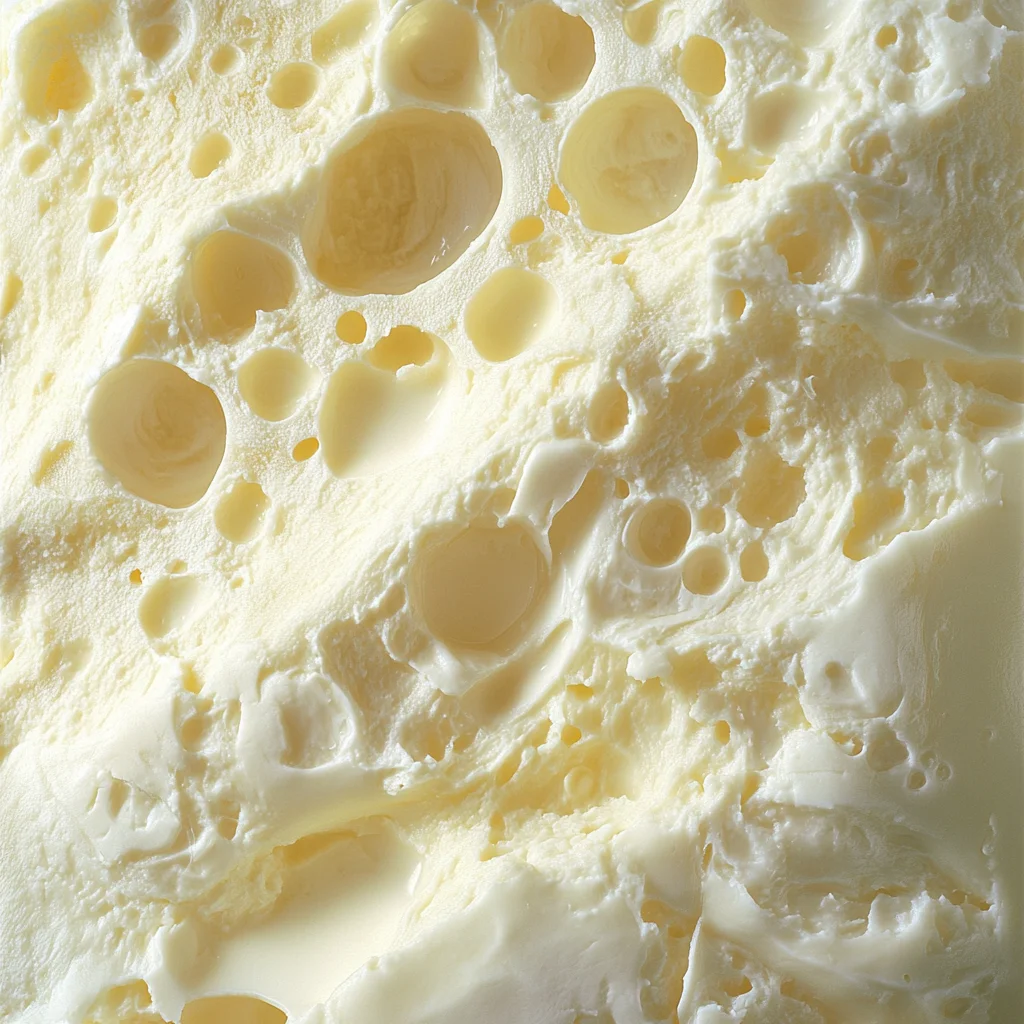
Moisture Content: The Foundation of Melting
The moisture content in cheese is a critical factor in its melting behavior and ability to form a cohesive layer:
- High-moisture cheeses (like fresh mozzarella) melt more evenly, creating a smooth and creamy texture. Water in these cheeses promotes even heat distribution, ensuring the cheese melts consistently and adheres to the pizza.
- Low-moisture cheeses (like aged mozzarella) can become dry and brittle under heat, leading to uneven melting and poor adhesion.
Pro Tip: For a perfectly balanced melt, opt for low-moisture mozzarella with enough water content to soften without becoming overly runny.
Fat Composition: Smooth, Creamy Melts
Fat plays a significant role in how cheese behaves on pizza:
- High-fat cheeses, such as whole-milk mozzarella or provolone, melt smoothly and create a rich, creamy layer. Fat acts as a lubricant, allowing the cheese to spread easily and adhere to the sauce and crust.
- However, excessive fat can lead to separation, where oil pools on the surface of the pizza, reducing adhesion and creating a greasy appearance.
Pro Tip: To avoid this, aim for a balanced fat content. Blending cheeses, like mozzarella with cheddar or fontina, can enhance flavor while maintaining adhesion.
Protein Structure: The Key to Elasticity and Stickiness
The protein structure in cheese determines its stickiness and stretchability. When heated, proteins denature, creating a network that traps fat and moisture, ensuring the cheese adheres properly.
- Mozzarella excels in adhesion due to its high casein content, which becomes elastic and sticky under heat.
- Fresh cheeses, such as burrata or fresh mozzarella, have pliable proteins that enhance adhesion, while aged cheeses can lose some of their elasticity and stickiness.
Pro Tip: Incorporate a mix of fresh and aged mozzarella for optimal adhesion and a balance of textures.
Why This Matters for Homemade Pizza
By understanding the role of moisture, fat, and protein, pizza makers can make informed choices when selecting cheese. Choosing the right combination ensures:
- Even melting and no burnt or dry patches.
- Optimal adherence to sauce and crust, preventing sliding.
- A creamy, stretchy texture that enhances every bite.
For a deeper dive into the science of cheese, explore Cheese Science Toolkit for expert insights.
Mastering cheese adhesion is both an art and a science, but with this knowledge, you’ll be well on your way to crafting pizzas where cheese not sticking to pizza is a thing of the past, with cheese that melts perfectly and stays in place. Ready to level up your homemade pizza game? Let’s get cooking!
Common Reasons Why Cheese Doesn’t Stick to Pizza
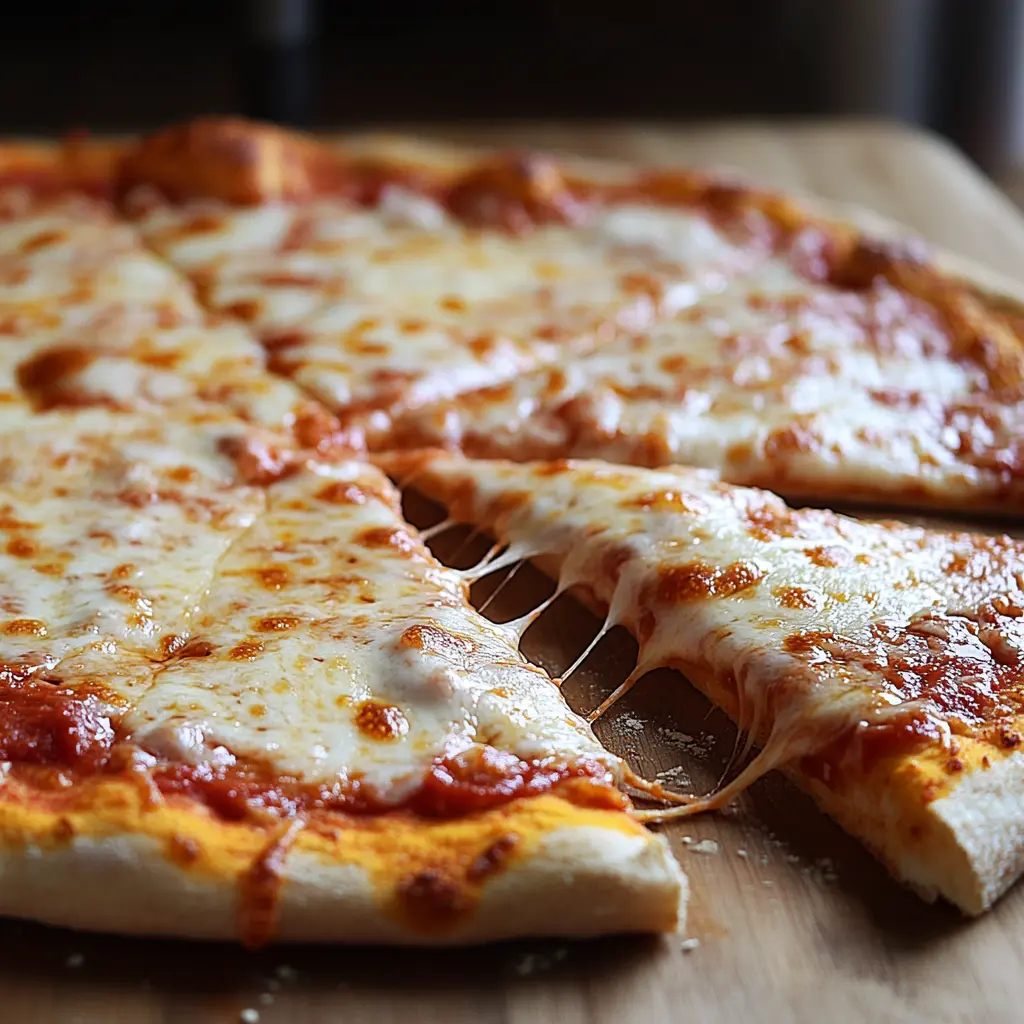
Achieving that perfect layer of melted cheese is crucial for a delicious and visually appealing pizza. Cheese not sticking to pizza, as a problem, can be incredibly frustrating. Here are some of the most common reasons why cheese slides off pizza and expert tips to ensure it stays in place.
Insufficient Sauce Layering
The sauce serves as a vital binding layer between the dough and the cheese:
- Too thin or uneven sauce: If the sauce is applied too sparingly or unevenly, it won’t provide enough surface area for the cheese to adhere.
- Over-saucing: Applying too much sauce can make the surface too slippery, causing the cheese to slide.
How to Fix It:
- Apply a moderate, even layer of sauce, ensuring it’s thick enough to hold the cheese but not watery. Aim for a consistency that clings to the dough without pooling.
- Use reduced or thickened tomato sauce for better adhesion.
Incompatible Cheese Type or Toppings
Not all cheeses behave the same way during baking, and some toppings can interfere with adhesion:
- Cheese type matters: Low-fat cheeses or aged varieties like parmesan lack the moisture and elasticity needed for proper melting and adhesion.
- Greasy toppings: Ingredients like pepperoni or oily sausage can create a slippery barrier, preventing the cheese from binding to the sauce or crust.
How to Fix It:
- Use a high-moisture, stretchy cheese like mozzarella as your base. For flavor, you can blend it with other cheeses (e.g., provolone or cheddar) that still melt well.
- Layer your toppings strategically by placing them on top of the cheese to avoid interference with adhesion.
Improper Oven Temperature and Cooking Time
The temperature of your oven and the cooking time play a critical role in cheese adhesion:
- Low oven temperatures: The cheese won’t melt properly, failing to bind with the sauce and crust.
- High oven temperatures: Excessive heat can cause cheese to burn or separate into oil and solids, reducing adhesion.
How to Fix It:
- Bake at 450–500°F (230–260°C) for optimal results. This temperature ensures the cheese melts evenly without burning.
- Using a pizza stone or steel helps maintain consistent heat, cooking the dough and cheese evenly for optimal texture and binding.
Dough Texture or Preparation Issues
The dough provides the structural base for the sauce and cheese, and its quality directly affects adhesion:
- Dry or overworked dough: Can crack, preventing the sauce and cheese from properly binding.
- Wet or under-proofed dough: Creates a soggy base, making it difficult for the cheese to stay in place.
How to Fix It:
- Ensure the dough is well-hydrated and kneaded just enough to develop gluten structure.
- Let the dough rest and proof properly to achieve a soft yet sturdy texture that supports the toppings.
Pro Tips for Perfect Cheese Adhesion
- Preheat Your Oven Thoroughly: A properly preheated oven ensures even cooking and prevents cheese from under- or over-melting.
- Layer Cheese Correctly: Place the cheese directly on the sauce, and ensure it’s evenly spread to prevent gaps.
- Grate Cheese Freshly: Pre-grated cheese often contains anti-caking agents, which can affect melting and adhesion. Use freshly grated cheese for the best results.
- Experiment with Blends: Try combining mozzarella with other melting cheeses like gouda, fontina, or provolone for enhanced flavor and adhesion.
By addressing these common issues, sauce consistency, cheese selection, oven temperature, and dough preparation, you can transform your homemade pizza into a professional-quality masterpiece, where cheese not sticking to pizza is no longer a concern. Understanding the science behind cheese adhesion and using the right techniques ensures every slice is topped with perfectly melted, gooey cheese that stays in place.
Cottage Cheese
Cottage cheese is rich in protein, calcium, and essential nutrients, making it an excellent choice for health-conscious food lovers. Its mild flavor pairs beautifully with classic pizza ingredients while offering a lighter alternative to dough-heavy bases.
Try the Recipe! Click here to explore this delicious, easy-to-make Cottage Cheese Pizza Crust recipe.
Crab Brûlée
This recipe elevates seafood into an unforgettable dish, combining the sweetness of fresh crab with a creamy, savory base. The caramelized topping adds a touch of luxury, creating a dish that feels both indulgent and gourmet.
Curious to try it? Click here to discover the full Crab Brûlée recipe and elevate your culinary repertoire.
Choosing the Right Cheese for Perfect Pizza Adhesion
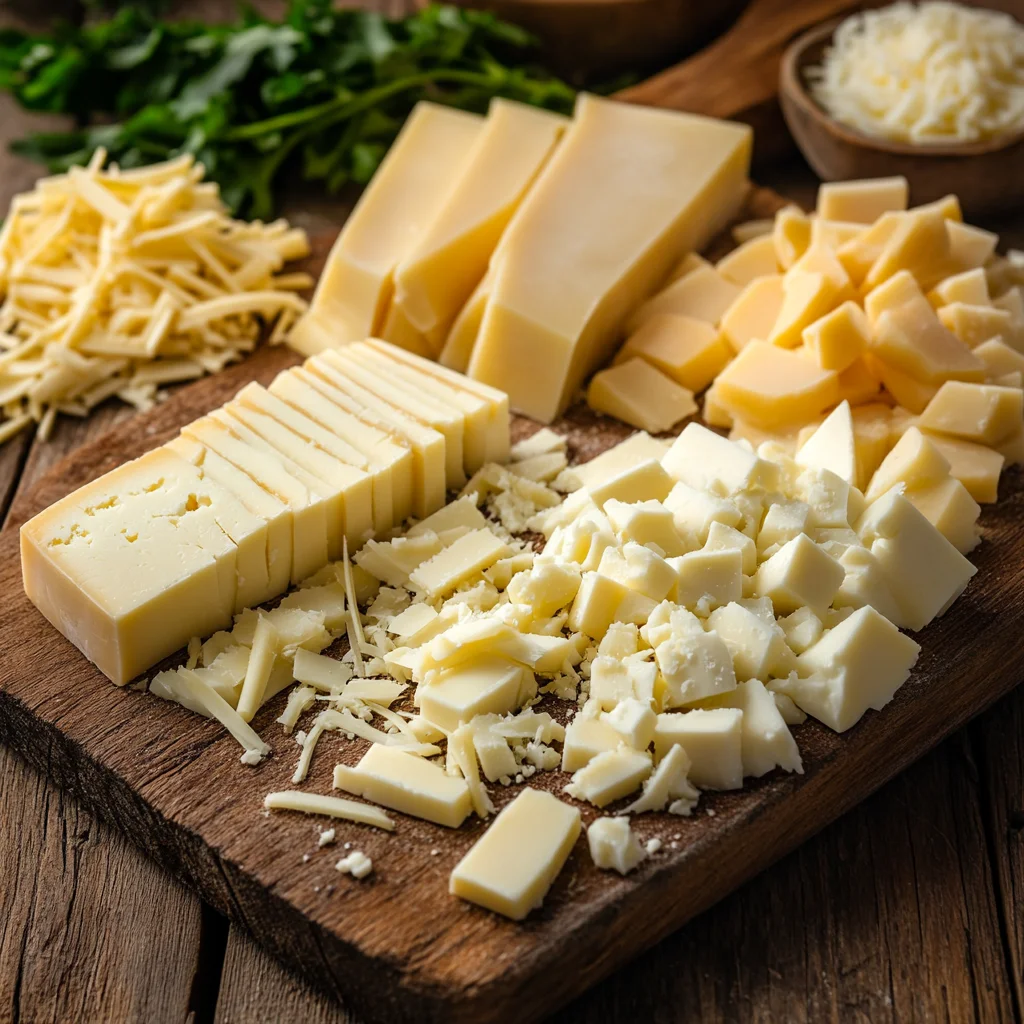
The type of cheese you choose for your pizza is crucial for achieving the perfect balance of flavor, texture, and adhesion. Properly chosen cheeses ensures Cheese Not Sticking to Pizza and is avoided. While mozzarella remains the gold standard, pairing it with other cheeses or making strategic choices can elevate your pizza’s melting quality and taste to new heights.
Mozzarella: The Go-To Cheese for Pizza
Mozzarella is the most popular cheese for pizza, and for good reason:
- Melting Properties: Mozzarella melts evenly, forming a cohesive, gooey layer that adheres well to the crust and sauce.
- Stretchability: Its unique protein structure provides that iconic pizza “cheese pull.”
- Versatility: Both whole-milk mozzarella (for creaminess) and low-moisture mozzarella (for better browning) work well, depending on your preferences.
Pro Tip: Opt for low-moisture mozzarella for better control over melting and to avoid excess water pooling on your pizza.
Exploring Other Popular Pizza Cheeses
While mozzarella is the foundation, other cheeses can add depth, flavor, and texture:
- Provolone
- Key Features: A semi-soft cheese that melts beautifully and adds a tangy, creamy profile.
- Best Use: Blend with mozzarella for enhanced meltability and a richer taste.
- Parmesan
- Key Features: A hard, aged cheese with a nutty flavor.
- Best Use: Grate lightly on top of baked pizza for flavor enhancement, as it doesn’t melt well due to its low moisture content.
- Cheddar
- Key Features: Sharp and colorful but can become greasy if used excessively.
- Best Use: Combine with mozzarella in small amounts to add sharpness, particularly in specialty pizzas like BBQ chicken.
- Fontina
- Key Features: Creamy, nutty, and smooth-melting, making it a gourmet addition.
- Best Use: Pair with mozzarella for a sophisticated flavor, especially for white pizzas.
- Asiago or Gouda
- Key Features: Harder cheeses with bold flavors, often used sparingly for accents.
- Best Use: Sprinkle lightly for unique flavor layers, ensuring they don’t dominate the meltability of softer cheeses.
The Importance of Shredding and Uniformity
Freshly shredding cheese is key to achieving better melting and adhesion:
- Why Fresh Matters: Pre-shredded cheese often contains anti-caking agents (like cellulose) that inhibit smooth melting and affect the texture.
- Uniform Pieces: Shredding cheese fresh creates smaller, even pieces that distribute more evenly over the pizza, improving melting and reducing clumping.
Pro Tip: Use a fine grater for harder cheeses like parmesan and a standard shredder for mozzarella or provolone to achieve the best consistency.
Mixing Cheeses for Optimal Flavor and Adhesion
Combining different cheeses can create a balance of flavor and texture while improving overall adhesion:
- The Base: Start with mozzarella for its superior melting qualities and stretchiness.
- Enhancers: Blend with provolone or fontina for creaminess, or cheddar for sharpness.
- Accents: Add small amounts of parmesan, asiago, or gouda for a flavor boost without compromising adhesion.
Pro Tip: Mix cheeses with similar melting characteristics to maintain a smooth, cohesive layer. For example, avoid pairing mozzarella with excessively dry or aged cheeses in high amounts, as this can disrupt the texture.
Practical Tips for Perfect Cheese Application
- Even Distribution: Spread shredded cheese evenly over the sauce to ensure consistent melting and avoid areas where cheese pools or burns.
- Balance Toppings: Layer toppings wisely to prevent grease from interfering with cheese adhesion. Place heavier toppings, like meats, beneath the cheese and lighter ones, like vegetables, on top.
- Pre-Bake the Crust (Optional): If using softer or wetter cheeses, consider lightly pre-baking the crust to prevent sogginess and improve adhesion.
Selecting the right cheese—or combination of cheeses—is the cornerstone of crafting a pizza with perfect adhesion and exceptional flavor, preventing the problem of Cheese Not Sticking to Pizza. By understanding the unique characteristics of different cheeses, shredding them fresh, and applying them thoughtfully, you can create a pizza that not only looks professional but tastes amazing.
Whether you stick with classic mozzarella or explore creative blends, mastering your cheese game is the key to pizza perfection.
A Well-Prepped Pizza Base: The Key to Perfect Cheese Adhesion
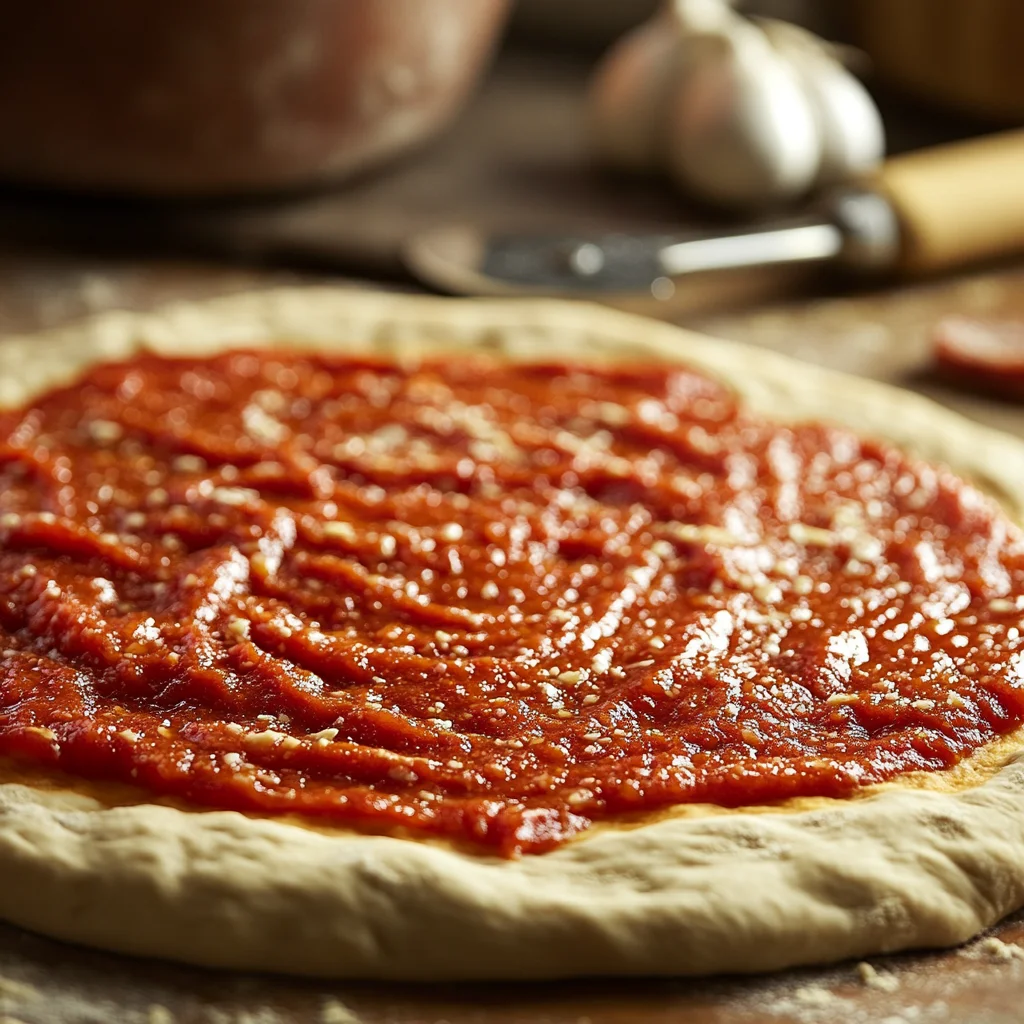
Achieving perfect cheese adhesion, which helps ensure Cheese Not Sticking to Pizza, starts with a well-prepared pizza base. From the dough’s texture to the consistency of the sauce and the strategic use of oils, every element contributes to ensuring the cheese stays in place and melds seamlessly with the crust. Here’s how to master the foundation of your pizza.
The Role of a Well-Prepped Dough
The dough serves as the structural base for all the toppings, and its texture and hydration level are critical to achieving adhesion:
- Hydration Balance: A properly hydrated dough creates a slightly moist surface that helps the sauce bond effectively.
- Too dry or overworked dough: Can crack, making it difficult for the sauce and cheese to adhere.
- Excessively wet dough: Creates a slippery surface, preventing proper adhesion.
- Elasticity and Structure: Allowing the dough to proof adequately develops its elasticity, providing a sturdy yet pliable surface for toppings.
Pro Tip: Aim for a dough hydration level of around 65–70% (ratio of water to flour) for a balanced, moist surface that enhances adhesion.
Tips for Spreading Sauce Evenly
The sauce acts as the primary adhesive layer between the crust and the cheese, and how it’s prepared and applied can make all the difference in preventing Cheese Not Sticking to Pizza:
- Choose the Right Consistency
- Use a sauce that’s slightly thick and spreadable, avoiding overly watery or chunky textures.
- A well-balanced sauce consistency creates a stable surface for the cheese without causing pooling or sliding.
- Apply Evenly
- Start from the center of the dough and spread outward in smooth, circular motions.
- Leave about 1 inch of space around the edges to prevent sauce and cheese from spilling over during baking.
- Mind the Quantity
- Apply just enough sauce to thinly coat the base.
- Excessive sauce can create a slippery surface, causing uneven cheese melting and poor adhesion.
Pro Tip: If your sauce is too watery, reduce it over low heat to thicken. For added flavor and adhesion, incorporate tomato paste for extra body.
Using Oils and Fats Strategically
Oils and fats play a dual role in flavor enhancement and adhesion improvement:
- Brush the Dough with Olive Oil
- Apply a thin layer of olive oil to the dough before adding sauce.
- This creates a moisture barrier, preventing the dough from becoming soggy while still allowing the sauce to grip.
- Enhance the Crust with Oil
- Lightly oil the edges of the crust to promote browning and crispness, ensuring a cohesive transition between the crust, sauce, and cheese.
- Use flavored oils (e.g., garlic-infused olive oil) for an extra flavor boost.
- Cheese and Fat Balance
- While whole-milk mozzarella has natural fat that aids in adhesion, combining it with lower-fat cheeses like part-skim mozzarella can help control oil pooling on the pizza’s surface.
The Result: A Perfect Foundation
By focusing on the dough’s hydration, evenly spreading a well-textured sauce, and using oils strategically, your pizza base will:
- Enhance adhesion: Create the ideal surface for cheese to stay put and melt evenly.
- Improve texture: Prevent sogginess while promoting crisp, golden edges.
- Elevate flavor: Add depth and balance, ensuring every bite is perfectly cohesive.
Pro Tip: To take your pizza base to the next level, experiment with pre-baking the crust for 3–5 minutes at 450°F (230°C). This creates a sturdier base for wetter toppings or cheese-heavy pizzas.
With a properly prepped pizza base, you’re setting the stage for flawless cheese adhesion and a pizza that looks as great as it tastes.
Techniques for Enhancing Cheese Adhesion on Pizza
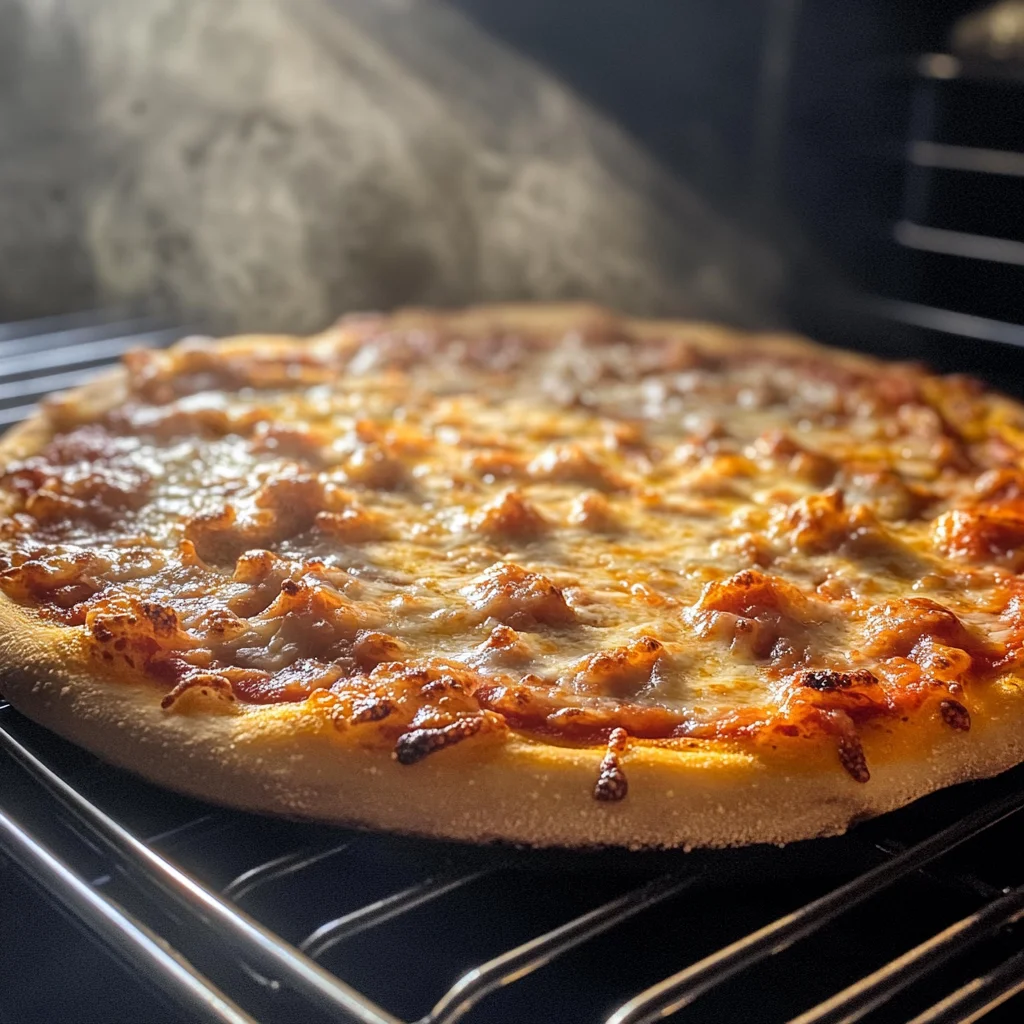
Achieving perfect cheese adhesion isn’t just about the type of cheese you use—it’s about creating the right balance of ingredients and employing smart cooking techniques. By fine-tuning the cheese-to-sauce ratio, layering toppings strategically, and leveraging pre-baking methods, you can ensure your pizza looks and tastes professional with every slice.
Proper Cheese-to-Sauce Ratio
The balance between cheese and sauce is one of the most critical factors for ensuring cheese sticks to the pizza:
- Avoid Too Much Sauce: Excess sauce creates a slippery surface, causing the cheese to slide during baking.
- Don’t Skimp on Sauce: Too little sauce may leave areas where the cheese has nothing to grip, resulting in uneven coverage.
How to Get the Balance Right:
- Apply just enough sauce to lightly coat the dough, creating a cohesive base layer. The sauce should be thick enough to adhere to the crust but not so heavy that it pools.
- Layering Order: Spread the sauce evenly, leaving a small border (about 1 inch) around the edges to prevent overflow. Ensure the cheese fully covers the sauce to lock everything in place during melting.
Pro Tip: For a perfect sauce consistency, reduce watery sauces over low heat or mix in tomato paste to add thickness and prevent sliding.
Adding Toppings Strategically
Toppings can significantly influence cheese adhesion depending on their weight, moisture content, and placement:
Moisture Management:
- High-moisture toppings (like mushrooms or fresh tomatoes) can release water during baking, causing the cheese to separate or slide.
- Solution: Pat toppings dry with a paper towel or roast them beforehand to remove excess moisture.
Weight Distribution:
- Heavier toppings (like pepperoni or sausage) should be placed underneath the cheese or lightly pressed into it. This creates a cohesive layer that integrates toppings into the cheese rather than allowing them to sit on top and disrupt adhesion.
Even Spacing:
- Distribute toppings evenly to prevent concentrated weight that could interfere with the cheese’s ability to melt and stick consistently.
Pro Tip: Avoid overloading the pizza with toppings. A well-balanced pizza ensures even cooking and optimal adhesion.
Pre-Baking the Dough
Pre-baking (par-baking) the dough is an excellent technique for creating a stable foundation that enhances sauce and cheese adhesion:
How It Works:
- Pre-baking firms up the dough’s surface without fully cooking it, creating a slightly textured layer that grips the sauce and cheese.
- Bake the dough briefly for 3–5 minutes at a high temperature (450–500°F or 230–260°C) before adding sauce, cheese, and toppings.
Additional Benefits:
- Prevents sogginess: Pre-baking helps avoid a soggy crust, especially when using high-moisture toppings.
- Improves texture: The bottom crust achieves a firmer, crispier finish while maintaining a soft and pliable interior.
Pro Tip: If you’re using heavy or wetter ingredients, pre-baking is a must to prevent the pizza from becoming waterlogged during baking.
Why These Techniques Matter
By focusing on these key factors, you can elevate your pizza-making game:
- Perfect Balance: A well-measured cheese-to-sauce ratio ensures cohesive layers and prevents sliding.
- Smart Topping Placement: Thoughtful layering and moisture management improve flavor integration and adhesion.
- Enhanced Base Stability: Pre-baking strengthens the dough’s surface and prevents common pitfalls like sogginess or uneven cooking.
Cheese adhesion is both an art and a science, but by mastering the balance of ingredients and employing these proven techniques, you’ll create pizzas that are not only visually stunning but also structurally sound. From perfectly melted cheese to toppings that stay in place, these methods ensure every bite is a delightful experience.
Oven Temperature and Cooking Tips for Perfect Cheese Adhesion
Achieving perfect cheese adhesion starts with understanding how the oven’s temperature and cooking techniques impact the pizza-making process. From preheating to using specialized tools like pizza stones or steels, mastering these factors ensures the cheese melts evenly and adheres seamlessly to the sauce and crust.
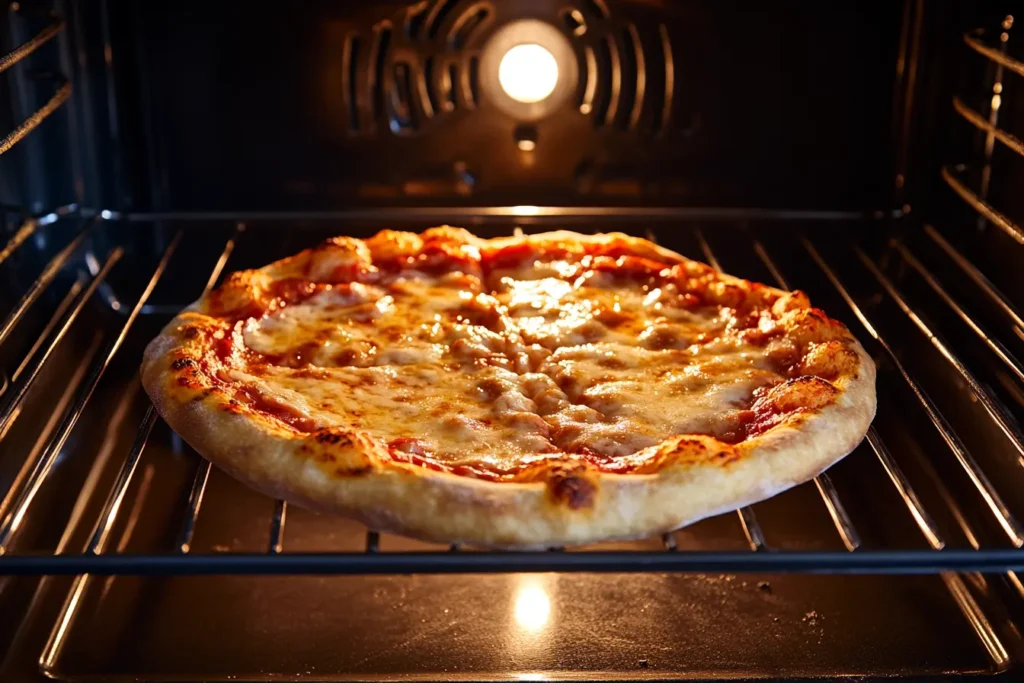
The Importance of Preheating the Oven (For Perfect Cheese Adhesion and Preventing Cheese Not Sticking to Pizza)
Preheating your oven is essential for achieving consistent results and creating the optimal environment for cheese adhesion, which ultimately helps prevent the frustrating problem of Cheese Not Sticking to Pizza:
- Even Heat Distribution: A preheated oven ensures the pizza is exposed to uniform heat from the moment it’s placed inside, promoting even cooking of the crust, sauce, and cheese, which is essential for good adhesion.
- Optimal Crust Development: Preheating helps the crust set quickly, creating a firm base for toppings and reducing the chance of sogginess, creating great and firm adhesion that you need to prevent Cheese Not Sticking to Pizza.
- Stabilized Temperature: Allowing the oven to fully preheat (for 20–30 minutes) ensures it reaches and maintains the desired cooking temperature, avoiding uneven baking, which is crucial for consistent cheese melting and adhesion.
Ideal Temperatures for Cheese Melting and Adhesion (and Preventing Cheese Not Sticking to Pizza):
The oven temperature directly impacts how cheese melts and adheres to the pizza, ultimately determining whether you’ll have to worry about Cheese Not Sticking to Pizza:
Optimal Temperature Range (for Perfect Cheese Adhesion):
- Set your oven between 450–500°F (230–260°C). This range is ideal for most pizzas, allowing the cheese to melt evenly without burning and promoting adhesion to the sauce and crust, which is vital for preventing Cheese Not Sticking to Pizza.
- For thin-crust pizzas, you can go slightly higher (500–525°F or 260–275°C) to achieve a crispier base while maintaining proper cheese melting and good adhesion.
Common Temperature Pitfalls (That Can Lead to Cheese Not Sticking to Pizza):
- Too Low (<400°F or 200°C): The cheese may melt unevenly and fail to bind with the sauce and crust, resulting in a messy pizza and increasing the likelihood of Cheese Not Sticking to Pizza.
- Too High (>550°F or 290°C): Excessive heat can cause the cheese to overcook, separate into oil and solids, and lose its adhesive properties, also leading to Cheese Not Sticking to Pizza.
Pro Tip: If your pizza includes high-moisture toppings (like fresh tomatoes or spinach), bake at the lower end of the range to avoid excess moisture disrupting the cheese adhesion and potentially causing the cheese to slide off.
Using Pizza Stones or Steels to Prevent Cheese Not Sticking to Pizza
Pizza stones and steels are invaluable tools for achieving professional-quality pizza and preventing Cheese Not Sticking to Pizza:
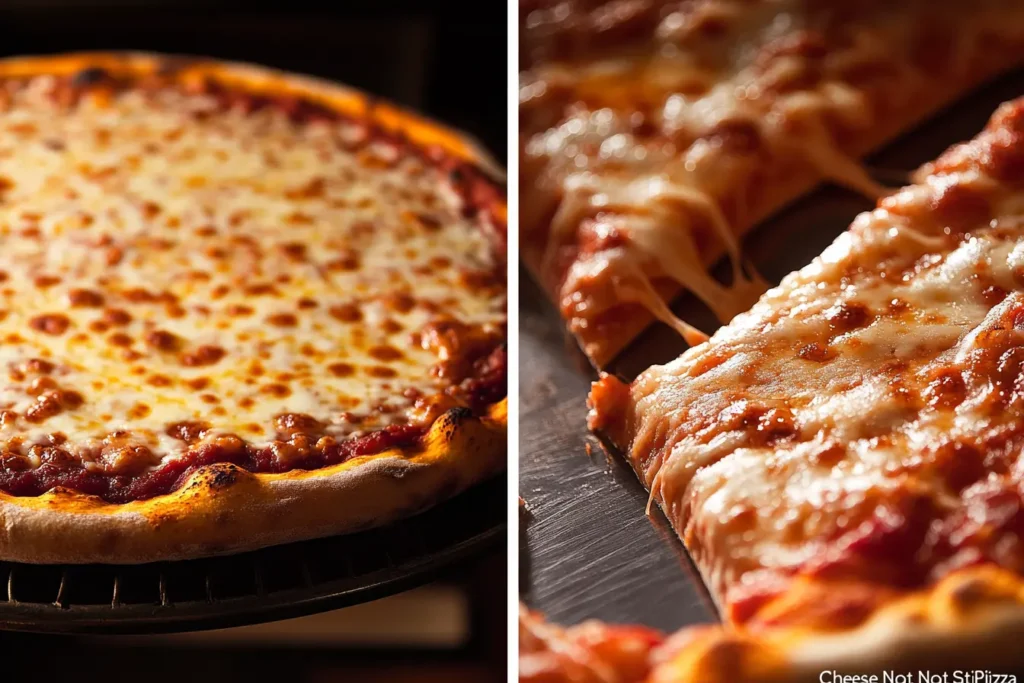
Heat Retention and Distribution:
- Both stones and steels absorb and retain heat effectively, providing a stable surface for even cooking.
- This ensures the crust cooks quickly and forms a solid base for the sauce and cheese, creating a favorable environment for cheese adhesion.
Crisp, Sturdy Base (Key to Preventing Cheese Not Sticking to Pizza):
- These tools absorb excess moisture from the dough, preventing a soggy base and creating a textured surface that helps the sauce and cheese adhere, which helps stop Cheese Not Sticking to Pizza.
Placement Tips:
- Position the pizza stone or steel on the middle rack of the oven for balanced heat exposure.
- Preheat the stone or steel along with the oven for at least 30 minutes to ensure it reaches the desired temperature.
Pro Tip: Dust the stone or steel with a light layer of flour or cornmeal before placing the pizza to prevent sticking and ensure an evenly crisp crust.
Additional Tips for Optimal Cheese Adhesion (and Preventing Cheese Not Sticking to Pizza):
- Rotating the Pizza: Halfway through the baking time, rotate the pizza for even cooking, especially in ovens with hot spots.
- Avoid Overloading: Too many toppings can weigh down the cheese, preventing it from adhering properly. Keep toppings balanced and evenly distributed.
- Use Freshly Shredded Cheese: Freshly grated cheese melts more smoothly than pre-shredded options, which often contain anti-caking agents that can affect adhesion.
Why These Techniques Work (To Make Sure the Result is Perfect):
By controlling the oven temperature, ensuring proper preheating, and leveraging tools like pizza stones or steels, you create the ideal conditions for:
- Even Cheese Melting: Avoiding clumping, sliding, or burning, a good starting point to prevent Cheese Not Sticking to Pizza.
- Perfect Adhesion: Ensuring the cheese bonds with the sauce and crust.
- Crisp yet Moist Crust: A sturdy base that supports the toppings without becoming soggy.
The oven is your most powerful tool for perfecting pizza, and understanding its role in cheese adhesion is key to achieving restaurant-quality results at home. With proper preheating, precise temperature control, and tools like pizza stones or steels, you can create a pizza where Cheese Not Sticking to Pizza is no longer a worry, where the cheese melts flawlessly and stays in place.
Troubleshooting Common Cheese Adhesion Issues: How to Fix “Cheese Not Sticking to Pizza”

Creating the perfect pizza requires more than just great ingredients—it’s about ensuring every layer works harmoniously to fix Cheese Not Sticking to Pizza. When cheese doesn’t adhere properly, issues like separation, grease pooling, or sliding cheese can compromise the flavor and presentation of your pizza. Here’s how to identify and solve these common problems.
Identifying Cheese Separation Problems (Which Can Lead to Cheese Not Sticking to Pizza)
Cheese separation occurs when the fat and proteins in cheese break down unevenly, resulting in a greasy, clumpy mess instead of a smooth, cohesive layer and ultimately contributing to Cheese Not Sticking to Pizza.
Signs of Cheese Separation (and Potential Adhesion Issues)
- Visible pools of oil on the pizza surface, making it difficult for the cheese to adhere.
- Clumpy or grainy texture in the melted cheese, preventing a smooth, even layer.
- Thin or uneven cheese coverage across the pizza, indicating poor adhesion.
Causes of Cheese Separation (and Why Cheese Might Not Stick)
- Excessively high-fat cheese: Using overly fatty or aged cheeses as the primary layer can lead to oil separation, hindering proper adhesion.
- Overheating: Cooking the pizza at overly high temperatures causes the cheese to break down before it can adhere properly.
- Pre-shredded cheese: Anti-caking agents found in pre-shredded cheese can interfere with smooth melting, which is vital for good adhesion.
Solutions for Cheese Separation (to Improve Adhesion and Prevent Cheese Not Sticking to Pizza)
- Choose Balanced Cheese: Opt for whole-milk mozzarella or cheese blends with moderate fat and moisture content for smoother melting and better adhesion.
- Monitor Oven Temperature: Stick to the optimal range of 450–500°F (230–260°C) to ensure even melting and prevent separation, which is crucial for cheese adhesion.
- Grate Cheese Fresh: Use freshly shredded cheese for better melting consistency and adhesion, helping to ensure the cheese stays in place.
Solutions for Greasy Cheese or Pooling Oil (And Helping Cheese Adhesion)
Excess grease can impact the texture and visual appeal of your pizza, and it can even contribute to Cheese Not Sticking to Pizza. But it’s an issue that’s easy to fix:
Causes of Grease Pooling (Leading to Potential Cheese Adhesion Issues)
- Using overly fatty cheeses like full-fat cheddar or aged gouda, which can make it more difficult to get the cheese to adhere properly.
- Adding greasy toppings (like pepperoni or sausage) directly on top of the cheese, creating a barrier that prevents proper adhesion.
- Cooking at temperatures that are too high, which accelerates oil release and further hinders adhesion.
How to Address Greasy Cheese Issues (and Improve Adhesion)
- Choose the Right Cheese: Start with whole-milk mozzarella or a blend of mozzarella with part-skim cheeses to maintain a balance of creaminess and low grease, helping the cheese to stick better.
- Drain Excess Oil: If grease pooling occurs after baking (potentially contributing to Cheese Not Sticking to Pizza), lightly blot the surface of the pizza with a paper towel to remove excess oil without affecting adhesion.
- Cook at Moderate Temperatures: Avoid excessive heat that can overcook the cheese and force the oil to separate, which can lead to adhesion problems.
- Blend Cheeses: Mixing mozzarella with lower-fat options (like provolone or fontina) helps reduce greasiness while maintaining adhesion and flavor, contributing to the prevention of Cheese Not Sticking to Pizza.
Steps to Salvage Poorly Adhered Cheese
If Cheese Not Sticking to Pizza is a problem you encounter, even after baking, there are still ways to salvage the pizza and improve future bakes:
Quick Fixes for Weak Cheese Adhesion
- Reheat Strategically: Return the pizza to the oven and switch to the broiler setting for 1–2 minutes. This encourages the cheese to melt and bond with the sauce and crust, helping to resolve Cheese Not Sticking to Pizza in the short term.
- Add More Cheese: Sprinkle a thin layer of freshly shredded cheese over the affected areas and bake for an additional 2–3 minutes until it melts evenly, reinforcing the adhesion.
- Use a Finishing Oil: Drizzle olive oil, garlic butter, or flavored oils over the pizza to mask imperfections and enhance overall flavor, providing a delicious distraction from any adhesion issues.
Long-Term Improvements for Adhesion (To Ensure Cheese Not Sticking to Pizza)
- Thicker Sauce: Ensure your sauce has enough body to grip the cheese. Watery sauces can create a slippery layer that prevents proper adhesion, one of the key reasons for Cheese Not Sticking to Pizza.
- Pre-Baking the Crust: Par-baking the crust for 3–5 minutes before adding toppings creates a firmer base for better cheese and sauce bonding, acting as preventative measure for Cheese Not Sticking to Pizza.
- Layer Toppings Thoughtfully: Place heavier or greasier toppings underneath the cheese to avoid disrupting adhesion and contributing to the problem of Cheese Not Sticking to Pizza.
Expert Tips for Preventing Future Adhesion Issues
- Use a Pizza Stone or Steel: These tools ensure the crust cooks evenly and creates a sturdy base for toppings, which is key to preventing Cheese Not Sticking to Pizza.
- Avoid Overloading with Toppings: Too many toppings can weigh down the cheese and cause it to slide or melt unevenly, often resulting in Cheese Not Sticking to Pizza.
- Balance Your Ingredients: Combine high-moisture cheese (like mozzarella) with low-moisture options (like asiago or parmesan) for better flavor and adhesion, helping to ensure that Cheese Not Sticking to Pizza isn’t a problem.
Why Troubleshooting Matters
Perfect cheese adhesion is about balancing ingredients and technique to achieve a pizza that looks as good as it tastes. By addressing issues like cheese separation, grease pooling, and weak adherence, you’ll consistently produce professional-quality pizzas with smooth, cohesive cheese layers that stay in place, eliminating the frustration of Cheese Not Sticking to Pizza.
Next Steps: Test these solutions on your next pizza night and watch as your cheese melts perfectly, enhancing both texture and flavor. Share your results and celebrate your newfound pizza expertise in preventing Cheese Not Sticking to Pizza!”
FAQs: Cheese not sticking to pizza
1. Why does my cheese slide off my pizza?
Cheese sliding off the pizza is often due to a few common issues:
Excess Sauce: If the sauce is too watery or applied unevenly, it can create a slippery surface that prevents the cheese from sticking. Ensure a moderate layer of thick, evenly spread sauce for better adhesion.
Too Much Cheese: Excessive cheese can weigh down the pizza and cause it to slide off. Stick to an appropriate cheese-to-sauce ratio.
Incorrect Cheese Type: Some cheeses, especially those with lower fat content or higher moisture, may not melt or adhere properly. Mozzarella, with the right moisture and fat content, is the best option.
Uneven Cooking: If the pizza isn’t cooked at the right temperature or for the correct amount of time, the cheese may not melt evenly and can slide off.
2. Can I use pre-shredded cheese?
While pre-shredded cheese is convenient, it often contains anti-caking agents to prevent clumping, which can inhibit even melting and affect the cheese’s ability to adhere to the pizza. These additives can create a greasy, uneven texture. For the best results, it’s recommended to shred cheese fresh right before baking. Freshly shredded cheese melts more evenly and sticks better to the crust and sauce.
3. Does low-fat cheese stick less?
Yes, low-fat cheese tends to melt and adhere less effectively than full-fat cheese. The fat in cheese plays a significant role in its melting properties and ability to bond with the sauce and dough. Low-fat cheeses often have a firmer texture, which can make them prone to separating or becoming rubbery when baked. If you’re aiming for better adhesion, opt for whole-milk or part-skim mozzarella. You can also blend low-fat cheese with higher-fat varieties to achieve a balance of flavor and adhesion.
4. Is there a difference between fresh and aged mozzarella?
Yes, there is a significant difference between fresh and aged mozzarella, both in terms of flavor and texture:
Fresh Mozzarella: Typically has higher moisture content and a softer texture. It melts beautifully and adheres well to the pizza, providing that signature stretch. However, because of its higher moisture, it can create a slightly soggy pizza if not properly drained.
Aged Mozzarella: Aged mozzarella has lower moisture content, which leads to a firmer, drier texture. While it has a more pronounced flavor, it doesn’t melt as well and might not adhere as smoothly to the pizza. Aged mozzarella is often better used in combination with fresh mozzarella or other cheeses for optimal melting and flavor balance
By understanding these common concerns, you can adjust your pizza-making techniques to ensure perfect cheese adhesion every time.
Conclusion: Cheese not sticking to pizza
Perfecting the art of pizza cheese adhesion involves careful attention to detail at every stage – from preparing the dough and sauce to selecting the right cheese and mastering baking techniques. By understanding the science of cheese melting and optimizing your oven temperature, layering of ingredients, and preparation methods, you can consistently create pizzas with beautiful, cohesive cheese that enhances both the flavor and the visual appeal. If you’re aiming to avoid Cheese Not Sticking to Pizza, this careful process is essential.
Key Takeaways:
- Dough Matters: Ensure the dough is well-prepared, hydrated, and, if necessary, par-baked to provide a sturdy foundation for the sauce and cheese, a crucial step for guaranteeing Cheese Not Sticking to Pizza.
- Sauce Consistency: A slightly thick, evenly spread sauce acts as the glue for the cheese. Avoid watery sauces that can exacerbate the problem of Cheese Not Sticking to Pizza.
- Cheese Selection: Opt for whole-milk mozzarella or a blend of complementary cheeses to balance flavor, texture, and meltability. Always shred fresh for the best results, as this significantly reduces the likelihood of Cheese Not Sticking to Pizza.
- Cooking Techniques: Preheat the oven properly, use a pizza stone or steel, and bake at 450–500°F (230–260°C) for even melting and adhesion. Mastering these techniques will help you confidently say goodbye to Cheese Not Sticking to Pizza.
When common issues arise, such as grease pooling, separation, or uneven melting, solutions like adjusting cheese blends, managing topping placement, and reheating strategically can help salvage the pizza and improve future results. Overcoming these issues are important as they contribute to Cheese Not Sticking to Pizza.
Additional Resources for Mastering Pizza
For further insights into the science of pizza-making and expert cheese recommendations, explore these trusted resources:
- Serious Eats: Pizza-Making Guide – A comprehensive resource for all aspects of pizza-making.
- Cheese Science Toolkit – In-depth explanations of cheese behavior during cooking.
- The Perfect Loaf: Pizza Dough Tips – Expert advice on preparing and proofing pizza dough.
- Kitchn: Cheese Blending Tips for Pizza – Practical tips on blending cheeses for flavor and performance.
By applying these techniques and understanding the factors that influence cheese adhesion, you’ll elevate your homemade pizza to a professional level, ensuring that Cheese Not Sticking to Pizza is a thing of the past. With practice, every slice will boast perfectly melted cheese that stays right where it belongs—on the pizza, thanks to the effective prevention of Cheese Not Sticking to Pizza!
Ready to try these tips? Let us know how they work for you and share your pizza success stories!

